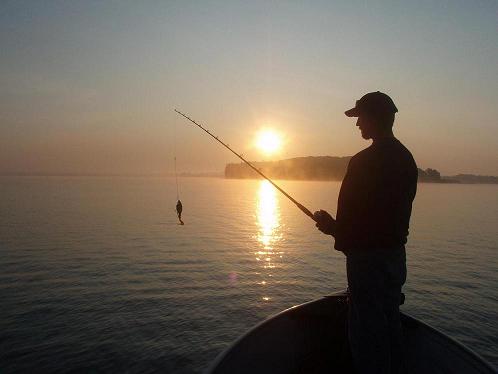|
|
| Was perusing through an old book, "Fishing Northern Pike and Muskies" (the kind you can find at fleet farm, menards sometimes, etc) and something caught my eye....
They talk about muskies having a clear "phase" a spotted "phase" etc. For some reason, this is bothering me...it just does not seem to fit with the fish I am catching and the lakes I have fished.
For example, my home waters are extremely clear (down to sometimes 16 feet). The fish I have both seen and caught always have spots or bars and spots...not one is ever clear "phased" Seen them summer winter fall and spring...but never a clear phase as the book talks about.
On the same note, the fish I have caught in darker waters have had clear sides....Fish from like the Chip have all had clear sides or extremely close to that.
Something does not seem right with the idea of a phase. Wouldn't this coloring be more due to environmental factors and camo? The camo thread is based more on prey species rather than predator species, so I did not gain much from there. Any thoughts?
Steve | |
| | |

Posts: 723
| I think it applies more to your home waters and the strains of fish you have there. I have seen some lakes hold plain silvery/green sided fish along with barred or blotchy fish. It may have something to do with the location you pull them out of,as far as weeds, rock,timber, maybe they're like a chamelion, where their colors change to match their surroundings. I have noticed while bluegill fishing that when your reeling bluegills in thery're light in color and as soon as you pull them out of the water, their colors darken up quite a bit. It could also have something to do with water temps. Good question though.
| |
| | |
| Musky coloration is a goofy deal. Some genetics, but lots of dependence on water chemistry I think. For instance, here in Michigan all of our stocked fish come from one broodstock lineage, housed in 2 broodstock lakes, which means these fish are, unfortunately, genetically pretty dang similar to each other. Efforts are being made to microchip adults so that different fish are milked and spawned each year, but frankly it's like closing the barn door after the horse is out (or something like that) since they all have the same great, great, great grandparents. Anyway, these very similar fish are stocked in all sorts of different waters across the state. In general this is what we have seen: Turbid water with heavy suspended sediment (<2' visibility) give very clear muskies with silver sides and brown/olive backs. Lightly stained water (3-5' visibility) gives highly variant bars/spots on the flanks, more defined in younger fish, and less brown/more olive backs. Clear water (>6' visibility) seems to give intense contrast on the flanks, with green tones throughout and less olive/more green backs. Kinda along the same lines, tigers from these different water chemistries seem to follow the same rules, though the color is similar and the contrast is what varies more. Muskies in lakes with different weed types and weed quantities, or muskies caught in open water vs. wood vs. weeds, but coming from the same basic water chemistry, look very similar. Not sure how this transfers to other systems with more diverse genetics, but that's the story, in general, around here.
One other note that some folks find interesting is that my pet muskies (currently 12-15") are heavily barred/spotted, but when stressed, freaked or otherwise being disturbed (i.e. when I am messing around in their tank, or when they are struggling to choke down a huge meal) they often wash out their flank coloration completely and look clear. I find it odd that adults don't do the same...if they did every fish we caught would look similar. | |
| |
|
 Color of Muskies
Color of Muskies Color of Muskies
Color of Muskies